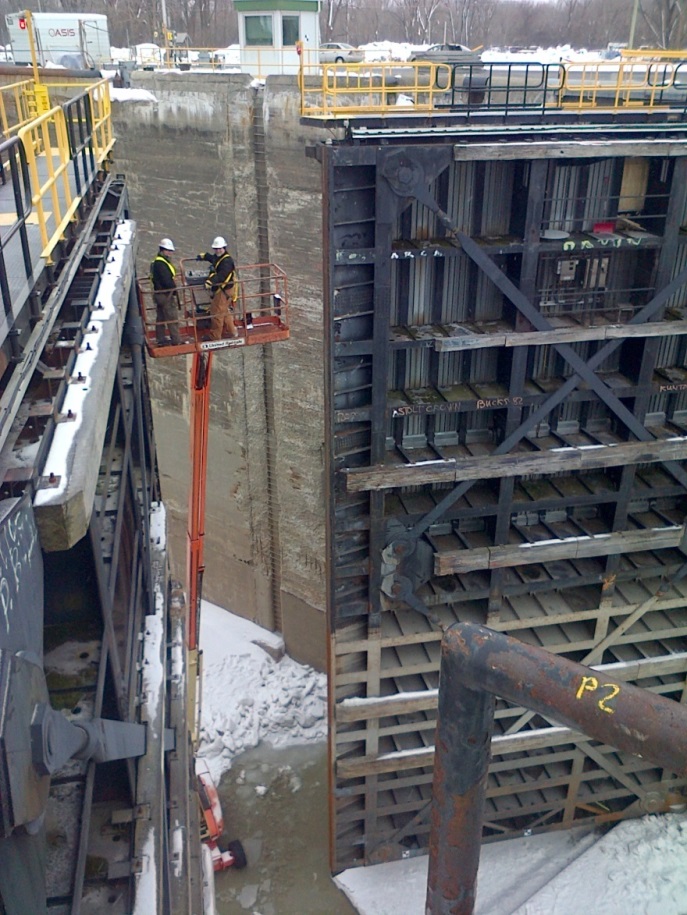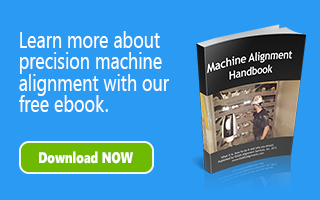Laser trackers are portable, 3-dimensional metrology tools that quickly collect large volumes of 3D measurements in real-time.
It is often a preconceived notion that precision is the defining strength of a measurement device. While it is true that many applications require extreme precision and accuracy, other applications can simply benefit from the versatility of such devices. Laser trackers are portable coordinate measurement devices where in most applications their precision is called upon for the demanding tasks of dimensional control of highly accurate tool or parts inspections, but the portability and versatility of laser trackers, is what also makes them especially useful in areas that may not require tight tolerances, are difficult to reach or difficult to measure using standard methods. Prior to the advent of portable 3D measurement devices such as laser trackers, precision measurements were attained using highly precise optical instruments and/or mechanical measuring tools. Although accurate, these methods can be time consuming, subject to cumulative error, usually limited to 2-dimensional results, and highly subject to human interpretation. Portable coordinate measurement machines, or other computer controlled measurement devices, now make the task of acquiring 3-dimensional data easier, faster, and more reliable.
Often the daunting task of simply getting the measurements is a challenge for even the most inventive metrologist. Large measurement volumes, complex surfaces, environment, accessibility to the components, or the speed with which measurements must be taken, are often restricting factors for traditional methods. These same factors prove to be ideal subjects for modern measurement devices such as laser trackers. The ability to measure from any position in a measurement volume, or even from multiple positions relayed together by a 3-dimensional metrology network of references, are further advantages to these modern devices.
Many view the use of such sophisticated devices as extravagant or even heavy-handed, but that viewpoint typically only considers the precision of the devices. In projects where the complexity of the measurements is a factor, the versatility of a modern device far outweighs its costs.
Still not convinced? You may want to consider the following. By not having to require orthogonal lines of sight or access to known offset baselines, as well as not having to collimate and collineate devices or include additive measurements between different methods, versatile instruments such as laser trackers are warranted and not necessarily overkill.
A good example of such a project is one that I was personally involved in recently where the alignment of a very large lime kiln was assessed. Traditionally, optical and mechanical methods would be used. It would begin by using an optical instrument to establish a line of site parallel to the machine by measuring punch marks on the frames. The tangent of the tires (large riding rings on which the drum rolls) and one set of trunnions (large rollers on which the tires ride) would then be measured in that line of sight. A parallel line of sight on punch marks on the opposite side of the frames would then be established and the other set of trunnions would then be measured. Next, the top or bottom tangent of the tires and trunnions would be measured and then all measurements area tied to a common elevation reference. In order to assess the geometry and alignment of the system, the diameters of all the components would need to be measured with a pi tape. Because the tires usually rest completely across the face of the trunnions, this is virtually impossible without turning the entire kiln in order to fish through the pi tape. Once all the diameters and tangent measurements were gathered, the mathematics could begin. The result is the alignment and geometry of the components as they relate to each other (or relative measurements) but not as they lie in space (absolute measurements).
For this project, instead of the traditional methods above, we chose to use a laser tracker. By using the laser tracker and its associated 3-dimensional software, we were able to quickly measure the tires and trunnions and the software mathematically formed cylinders based on the pointcloud we measured on their surfaces. All of the measurements were brought together using a network of references by which the device positions were combined. Not only were we able to provide the alignment and geometry of the individual components and how they relate to each other, but we were able to deduct their absolute position in space. The results were then looked at relative to a level plane or relative to an average centerline of the tires. All of the measurements were instantly displayed as part of a 3D CAD model in real-time. So, although the precision required by the customer was only 1/16”- 1/8”, by using the laser tracker, we were able to supply the customer with more information than ever before and more importantly, it was supplied quickly and with very reliable data. Similar projects have been performed for debarking drums and wire stranding machines.

Image of 300′ Lime Kiln created using 3D metrology software
Other examples of measurement tasks that do not typically require high precision, but benefit from the versatility of a laser tracker are:
- Crane rails (or other rails)
- Large but complex 3D steel structures
- Large ducting
- Floor or surface topography
- Conveyor alignment
- Compartmented measurements (ships)
A reputable dimensional metrology service provider that can provide a wide range of services and has a multi-faceted toolbox, including very versatile devices such as laser trackers, can provide modern and efficient solutions to sometimes seemingly overwhelming challenges.

